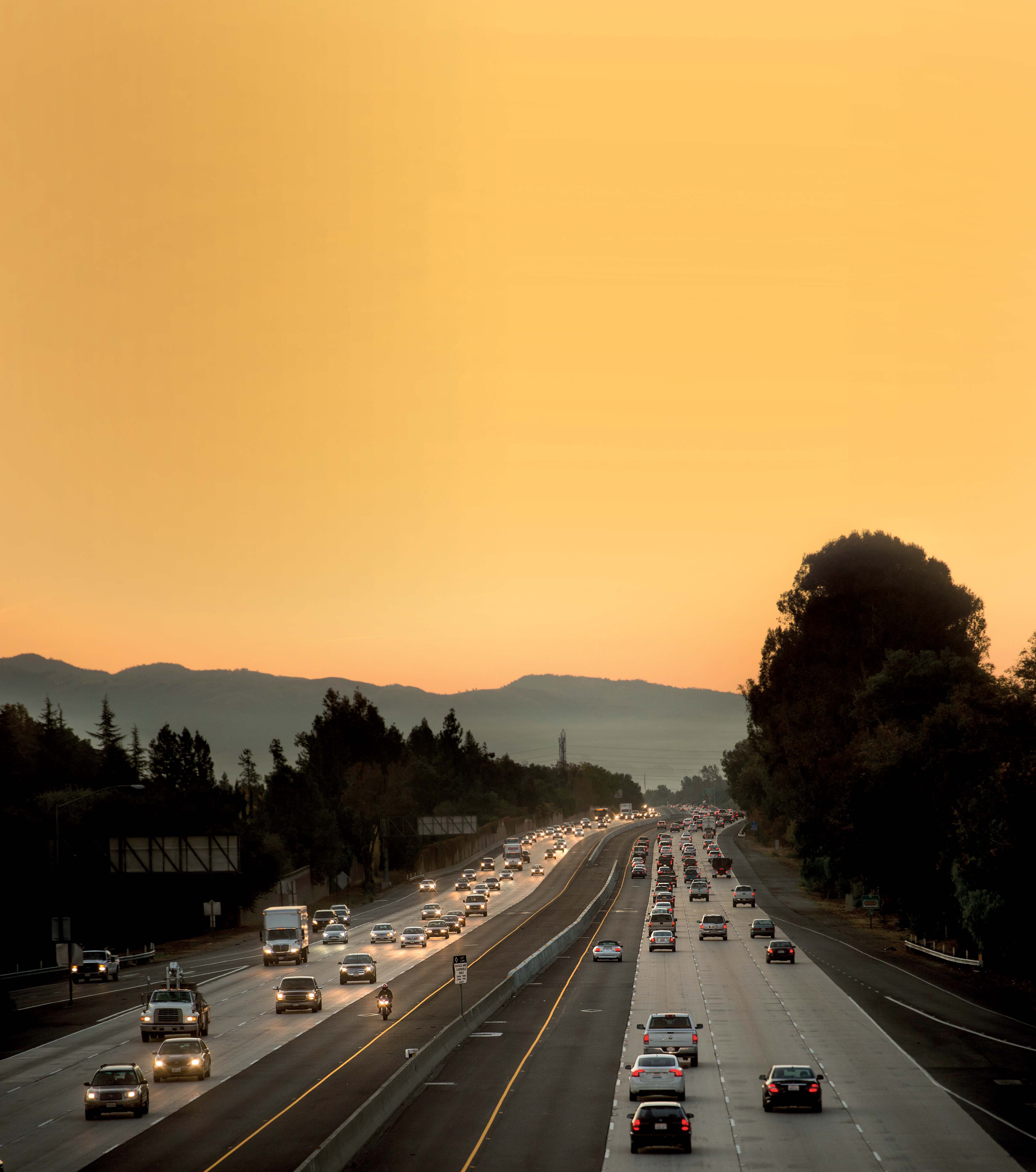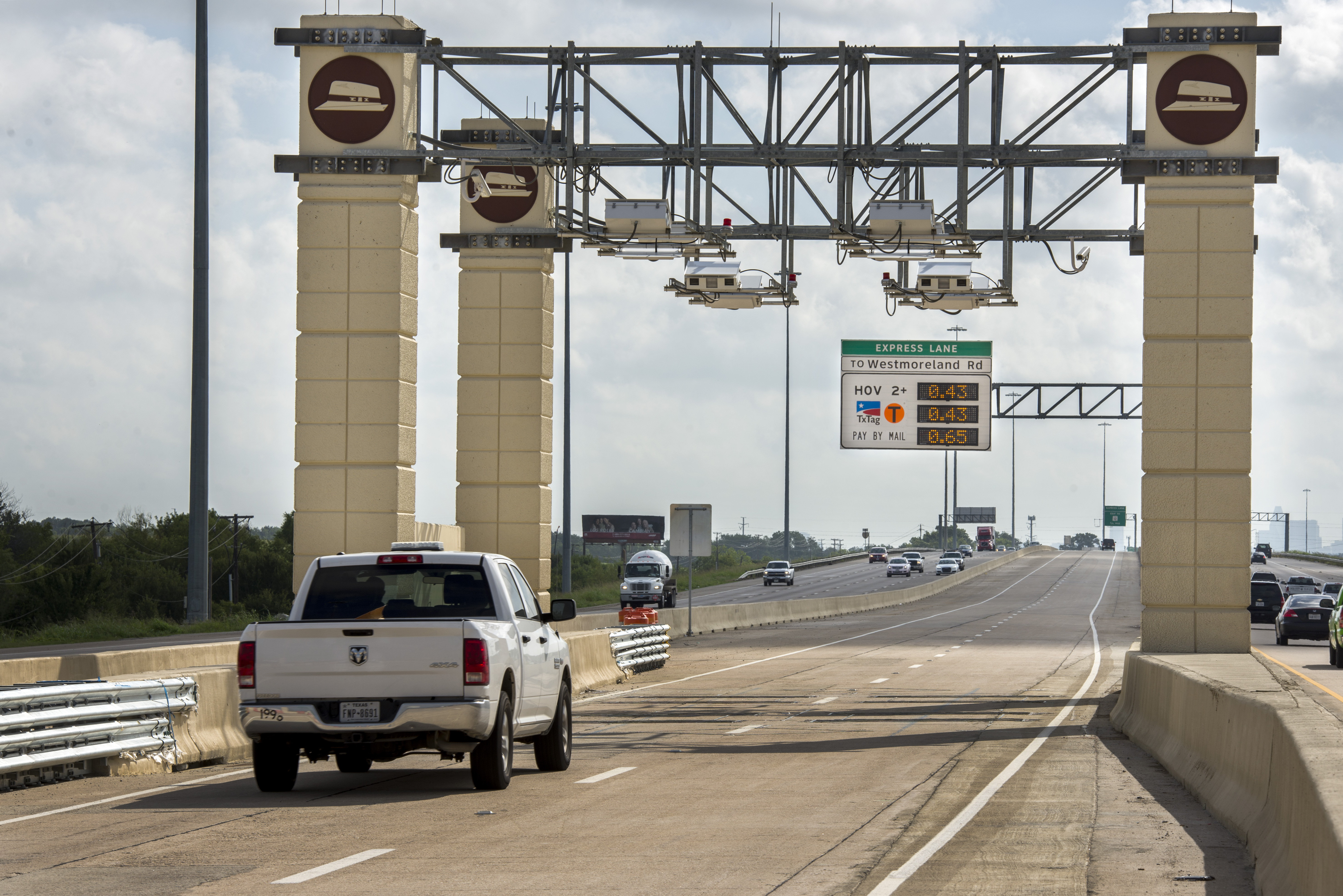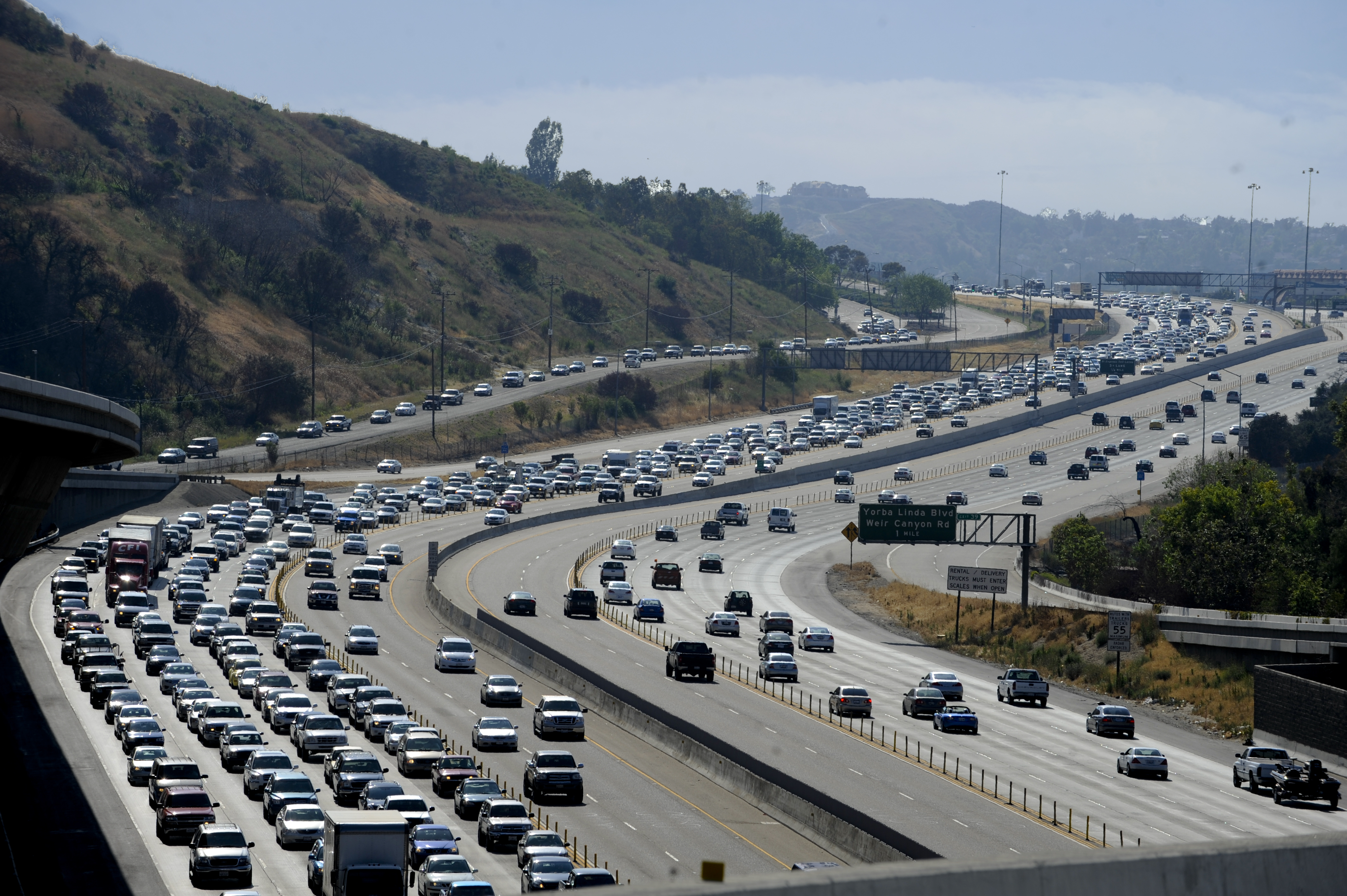Colin Sowman looks at plans to convert 240km (150 miles) of HOV/car pool lanes. While some authorities have debated the conversion of high occupancy vehicle lanes (HOV) into express or managed lanes allowing toll paying single-occupant vehicles to avoid congestion, San Francisco’s Bay Area Metropolitan Transportation Commission (MTC) has acted. It is converting 240km (150 miles) of HOV/car pool lanes to express lanes and last fall the MTC’s Bay Area Infrastructure Financing Authority selected TransCore to d

Motorcycles and low emission vehicles will be able use the express lanes without charge (pic MTC)
Colin Sowman looks at plans to convert 240km (150 miles) of HOV/car pool lanes
While some authorities have debated the conversion of high occupancy vehicle lanes (HOV) into express or managed lanes allowing toll paying single-occupant vehicles to avoid congestion, San Francisco’s Bay Area343 Metropolitan Transportation Commission (MTC) has acted. It is converting 240km (150 miles) of HOV/car pool lanes to express lanes and last fall the MTC’s Bay Area Infrastructure Financing Authority selected 139 TransCore to develop, integrate and maintain the first stage of this plan.
As with many HOV/carpool lanes those in the Bay Area generally only operate in peak periods (5am to 9am and 3pm to 7pm weekdays) and eligibility requirements are two or more passengers. Other eligible vehicles include buses, motorcycles and single-occupant vehicles meeting specific emissions standards (which are issued with a green and white decal by the Department of Motor Vehicles).
HOV lanes in the Bay Area (and elsewhere) can provide big travel time savings and the I-880 Traffic Operations Analysis Report (TOAR) indicates that southbound using HOV lanes between 8am and 9am will save about 26 minutes compared with those in the general purpose lanes. And yet many of these lanes can be underutilised.
“This is not an uncommon situation but to simply do away with HOV lanes would remove the incentives for ride sharing, car pooling and using low emission vehicles while also detracting from using transit buses,” said Jim Macrae, senior project manager, MTC.
Under MAP21, HOV lanes are to maintain an average speed of 72km/h (45mph) for 90% of the time which is generally taken to equate to a capacity of approximately 1,650 vehicles per hour. Figures in TOAR predict a maximum northbound morning peak of 960 vehicles/hr (including motorcycles, hybrid vehicles and single-occupant violators) and 1,100 vehicles/hr in the afternoon. In comparison the general use lanes are at and above 1,500 vehicles/hr throughout the peak period and can outnumber those in the HOV lanes by four to one.
Therefore allowing up to 700 non-qualifying and toll-paying motorists to use the HOV lane will better utilise the available road space while dynamic pricing will be used to limit the number of single-occupant vehicles to maintain the required 72km/h (45mph) average speed. There is some resistance to converting HOV lanes to express lanes as objectors believe it downgrades the advantages of ride sharing or carpooling and that such a move would be regressive – favouring higher-income households to the detriment of less wealthy motorists.
While acknowledging that high-income households travel more frequently by car than lower- and middle-income households, the MTC cites survey evidence that all income levels value and utilise toll lanes for better reliability of travel. In 2012 it also conducted its own surveys and focus groups among low-income and minority travellers living or working along selected Bay Area Express Lane corridors and 62% of respondents would be willing to pay to occasionally use the express lanes.
Macrae sees it in another way: “Unlike funding options such as dedicated toll roads or an extension of gas taxes, drivers are not forced to pay and can remain in the free use general purpose lanes. At the moment time-strapped solo drivers do not have the option of using a congestion-free HOV lane but under the new system will have the option to pay the fee to achieve a shorter travel time.”
There are some big imperatives behind the MTC’s move: not only the need to reduce current congestion levels but to accommodate the 2.1 million additional inhabitants that are expected to live in the region by 2040. Its funding constraints mean there is not enough money to build the required capacity to keep pace with that growth (only 5% of the regions’ transportation dollars are available to build new roads or additional transit). Space constraints prevent widening the highways to add more lanes.
The converted lanes will not be the Bay Area’s first experience with express lanes as there are existing express lanes along 22.5km (14 miles) of the I-680. It will first convert 240km (150 miles) of existing HOV lanes to express lanes and will later add another 190km (120 miles) of new lanes to close key gaps in the express lane system. Completion dates range from 2016 to 2035.
By the end of 2017, this initial project will see the conversion of more than 140km (almost 90 miles) of existing HOV lanes into express lanes on the I-680, the I-880 and the I-80. And this is only the first stage in the MTC master plan to create 435km (270 miles) of express lanes which will form part of the wider8012 Bay Area Express Lanes’ network that, by 2035, will stretch for 885km (550 miles).
The projects currently contracted break down into:
I-680 in Contra Costa County between Alcosta Blvd and Rudgear Road
• NB – 11.2 miles (Alcosta Blvd and Livorna Road)
• SB – 12.5 miles (Alcosta Blvd and Rudgear Road)
I-880 in Alameda County between Marina and Dixon Landing Road
• NB – 22.3 miles (Dixon Landing Road and Lewelling Boulevard)
• SB – 27.5 miles (Hegenberger Road and Dixon Landing Road)
I-80 in Solano County between Red Top Road and Air Base Parkway
• NB & SB – 8 miles
“The express lanes will have either an open access or, depending on operational and safety issues, limited access with special signage and lane striping to direct entering and exiting drivers,” said TransCore vice president, Chris Hall. “In some areas lane widening may be required but the technology needed to convert the existing HOV lanes to express lanes is minimal: installing gantries/masts/poles, detection equipment and dynamic message signs to display dynamically generated toll rates.”
Installing the tolling system will cost $45.4 million and another $9.2 million will provide for maintenance through to June 2019.
The infrastructure will include a variety of ITS subsystems and components such as automatic vehicle identification via RF readers, overhead lasers for vehicle detection, an image capture system, traffic monitoring, closed-circuit television, controllers, servers and data storage systems. Along the I-680 and I-880 corridors the various elements will be connected using a wide area fiber optic communications network while a wireless communications network will be implemented along the I-80.
Drivers will self-declare vehicle occupancy via the dedicated transponder which has selectable Single, Two and Three Plus modes. An automated occupancy counting system has not been specified so to help the California Highway Patrol (CHP) enforce proper use of the lanes, the existing observation areas will be extended.
The dynamic pricing of the toll charge will be calculated by the Host System which will set toll pricing by segment and zone based on real time traffic conditions. It will also include a trip building module that will combine motorist transactions at various read points into a single trip toll transaction using tag reads, optical character recognition, and fingerprinting technologies all under near continuous access conditions.
Conversion to express lanes does not spell the end of benefits for HOV/carpool as multiple occupancy and carpool vehicles will continue to be able to use the segregated lanes either free or at a discounted rate. Indeed the MTC goes even further and sees its express lanes as providing additional benefits for HOV/carpool travellers because currently the dedicated lanes are not continuous along the express lane project corridors.
Furthermore, the expectation is that toll revenue from the express lanes will help fund the gap closures as this will require new construction, while the driver-only vehicles diverting to the express lanes will ease congestion in the free-use lanes. Weekly predictions for the number of single-occupancy vehicles using the express lanes range from a low of 8,500 on the I-80 to a high of 109,000 on the I-880.
On the existing 22.5km (14 miles) dynamically-priced I-680 typical tolls for single occupancy vehicles average $3.84 or $0.170/km ($0.27 per mile) which MTC said is slightly below the average across the US. Even using the $0.27 figure the extrapolated annual revenue from converting HOV to express lanes would be in the range of $35 million to $44 million.
It is expected that the express lanes will be operational for the same hours as the current HOV lanes. However, if off-peak traffic worsens their hours can be changed and if traffic gets heavy enough, the express lanes will revert to HOV only. If the lanes still do not flow smoothly, other options will have to be considered to ensure that carpools maintain an advantage, including raising the HOV occupancy rate.
“Express lanes are an elegant solution to the underuse of HOV lanes,” Macrae said, adding: “While leaving the general use lanes free to use, this solution eases congestion without compromising the advantages of low emission, multi-occupancy car pooling and improved access for transit vehicles.”
While some authorities have debated the conversion of high occupancy vehicle lanes (HOV) into express or managed lanes allowing toll paying single-occupant vehicles to avoid congestion, San Francisco’s Bay Area
As with many HOV/carpool lanes those in the Bay Area generally only operate in peak periods (5am to 9am and 3pm to 7pm weekdays) and eligibility requirements are two or more passengers. Other eligible vehicles include buses, motorcycles and single-occupant vehicles meeting specific emissions standards (which are issued with a green and white decal by the Department of Motor Vehicles).
HOV lanes in the Bay Area (and elsewhere) can provide big travel time savings and the I-880 Traffic Operations Analysis Report (TOAR) indicates that southbound using HOV lanes between 8am and 9am will save about 26 minutes compared with those in the general purpose lanes. And yet many of these lanes can be underutilised.
“This is not an uncommon situation but to simply do away with HOV lanes would remove the incentives for ride sharing, car pooling and using low emission vehicles while also detracting from using transit buses,” said Jim Macrae, senior project manager, MTC.
Under MAP21, HOV lanes are to maintain an average speed of 72km/h (45mph) for 90% of the time which is generally taken to equate to a capacity of approximately 1,650 vehicles per hour. Figures in TOAR predict a maximum northbound morning peak of 960 vehicles/hr (including motorcycles, hybrid vehicles and single-occupant violators) and 1,100 vehicles/hr in the afternoon. In comparison the general use lanes are at and above 1,500 vehicles/hr throughout the peak period and can outnumber those in the HOV lanes by four to one.
Therefore allowing up to 700 non-qualifying and toll-paying motorists to use the HOV lane will better utilise the available road space while dynamic pricing will be used to limit the number of single-occupant vehicles to maintain the required 72km/h (45mph) average speed. There is some resistance to converting HOV lanes to express lanes as objectors believe it downgrades the advantages of ride sharing or carpooling and that such a move would be regressive – favouring higher-income households to the detriment of less wealthy motorists.
While acknowledging that high-income households travel more frequently by car than lower- and middle-income households, the MTC cites survey evidence that all income levels value and utilise toll lanes for better reliability of travel. In 2012 it also conducted its own surveys and focus groups among low-income and minority travellers living or working along selected Bay Area Express Lane corridors and 62% of respondents would be willing to pay to occasionally use the express lanes.
Macrae sees it in another way: “Unlike funding options such as dedicated toll roads or an extension of gas taxes, drivers are not forced to pay and can remain in the free use general purpose lanes. At the moment time-strapped solo drivers do not have the option of using a congestion-free HOV lane but under the new system will have the option to pay the fee to achieve a shorter travel time.”
There are some big imperatives behind the MTC’s move: not only the need to reduce current congestion levels but to accommodate the 2.1 million additional inhabitants that are expected to live in the region by 2040. Its funding constraints mean there is not enough money to build the required capacity to keep pace with that growth (only 5% of the regions’ transportation dollars are available to build new roads or additional transit). Space constraints prevent widening the highways to add more lanes.
The converted lanes will not be the Bay Area’s first experience with express lanes as there are existing express lanes along 22.5km (14 miles) of the I-680. It will first convert 240km (150 miles) of existing HOV lanes to express lanes and will later add another 190km (120 miles) of new lanes to close key gaps in the express lane system. Completion dates range from 2016 to 2035.
By the end of 2017, this initial project will see the conversion of more than 140km (almost 90 miles) of existing HOV lanes into express lanes on the I-680, the I-880 and the I-80. And this is only the first stage in the MTC master plan to create 435km (270 miles) of express lanes which will form part of the wider
The projects currently contracted break down into:
I-680 in Contra Costa County between Alcosta Blvd and Rudgear Road
• NB – 11.2 miles (Alcosta Blvd and Livorna Road)
• SB – 12.5 miles (Alcosta Blvd and Rudgear Road)
I-880 in Alameda County between Marina and Dixon Landing Road
• NB – 22.3 miles (Dixon Landing Road and Lewelling Boulevard)
• SB – 27.5 miles (Hegenberger Road and Dixon Landing Road)
I-80 in Solano County between Red Top Road and Air Base Parkway
• NB & SB – 8 miles
“The express lanes will have either an open access or, depending on operational and safety issues, limited access with special signage and lane striping to direct entering and exiting drivers,” said TransCore vice president, Chris Hall. “In some areas lane widening may be required but the technology needed to convert the existing HOV lanes to express lanes is minimal: installing gantries/masts/poles, detection equipment and dynamic message signs to display dynamically generated toll rates.”
Installing the tolling system will cost $45.4 million and another $9.2 million will provide for maintenance through to June 2019.
The infrastructure will include a variety of ITS subsystems and components such as automatic vehicle identification via RF readers, overhead lasers for vehicle detection, an image capture system, traffic monitoring, closed-circuit television, controllers, servers and data storage systems. Along the I-680 and I-880 corridors the various elements will be connected using a wide area fiber optic communications network while a wireless communications network will be implemented along the I-80.
Drivers will self-declare vehicle occupancy via the dedicated transponder which has selectable Single, Two and Three Plus modes. An automated occupancy counting system has not been specified so to help the California Highway Patrol (CHP) enforce proper use of the lanes, the existing observation areas will be extended.
The dynamic pricing of the toll charge will be calculated by the Host System which will set toll pricing by segment and zone based on real time traffic conditions. It will also include a trip building module that will combine motorist transactions at various read points into a single trip toll transaction using tag reads, optical character recognition, and fingerprinting technologies all under near continuous access conditions.
Conversion to express lanes does not spell the end of benefits for HOV/carpool as multiple occupancy and carpool vehicles will continue to be able to use the segregated lanes either free or at a discounted rate. Indeed the MTC goes even further and sees its express lanes as providing additional benefits for HOV/carpool travellers because currently the dedicated lanes are not continuous along the express lane project corridors.
Furthermore, the expectation is that toll revenue from the express lanes will help fund the gap closures as this will require new construction, while the driver-only vehicles diverting to the express lanes will ease congestion in the free-use lanes. Weekly predictions for the number of single-occupancy vehicles using the express lanes range from a low of 8,500 on the I-80 to a high of 109,000 on the I-880.
On the existing 22.5km (14 miles) dynamically-priced I-680 typical tolls for single occupancy vehicles average $3.84 or $0.170/km ($0.27 per mile) which MTC said is slightly below the average across the US. Even using the $0.27 figure the extrapolated annual revenue from converting HOV to express lanes would be in the range of $35 million to $44 million.
It is expected that the express lanes will be operational for the same hours as the current HOV lanes. However, if off-peak traffic worsens their hours can be changed and if traffic gets heavy enough, the express lanes will revert to HOV only. If the lanes still do not flow smoothly, other options will have to be considered to ensure that carpools maintain an advantage, including raising the HOV occupancy rate.
“Express lanes are an elegant solution to the underuse of HOV lanes,” Macrae said, adding: “While leaving the general use lanes free to use, this solution eases congestion without compromising the advantages of low emission, multi-occupancy car pooling and improved access for transit vehicles.”









